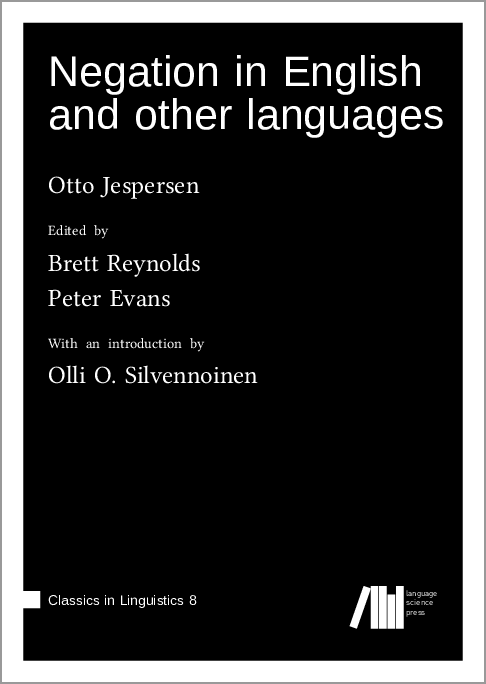We log anonymous usage statistics. Please read the privacy information for details.
Negation in English and other languages
Synopsis
Otto Jespersen's landmark study of negation provides a wide-ranging analysis of how languages express negative meaning. Drawing on an impressive array of historical texts and comparative examples, primarily from Germanic and Romance languages, Jespersen examines the forms, functions, and historical development of negative expressions. The work traces the evolution of negative markers, analyzes how negative prefixes modify word meanings, and reveals coherent patterns in how languages structure negative expressions.
Through meticulous analysis of authentic examples, Jespersen documents both common patterns and language-specific variations in negative expressions. His treatment of topics such as double negation, the distinction between special and nexal negation, and the various forms of negative particles provides a methodical account of negation's complexity. The work's enduring importance stems not only from its analysis of the cyclical renewal of negative markers (later termed “Jespersen's Cycle”) but from its comprehensive scope and detailed examination of negative expressions across multiple languages and historical periods.
This new critical edition makes this classic work accessible to modern readers while preserving its scholarly depth. The text has been completely re-typeset, with examples presented in contemporary numbered format and non-English examples given Leipzig-style glosses. A new introduction contextualizes Jespersen's achievement and demonstrates its continued significance for current linguistic research.
Reviews
-
Review on LinguistList
by Anastasiia Petrenko
published August 31, 2025
[…] This book, “Negation in English and Other Languages” (henceforth “Negation”), written by Otto Jespersen and edited by Brett Reynolds and Peter Evans with an introduction by Olli O. Silvennoinen, is a newly second edition of Jespersen’s 1917 classic. This edition makes this work more accessible, preserving its historical significance and enhancing its usability and applicability for contemporary readers. The editors’ contributions are significant. The new edition is supplemented with a new introduction to familiarize the reader with the context and limitations of the time when the book was written; the method of transcription has been modernized and glosses added to the examples extracted from languages other than English; the bibliography has been made more accessible by adding links to internet resources, as well as some new section titles; the abbreviations have been made clearer; some main body paragraphs have been moved to footnotes; and the citations have been verified by double-checking the page from which the examples were taken. These editorial changes enhance the book’s accessibility without refuting Jespersen’s original arguments.[…]




